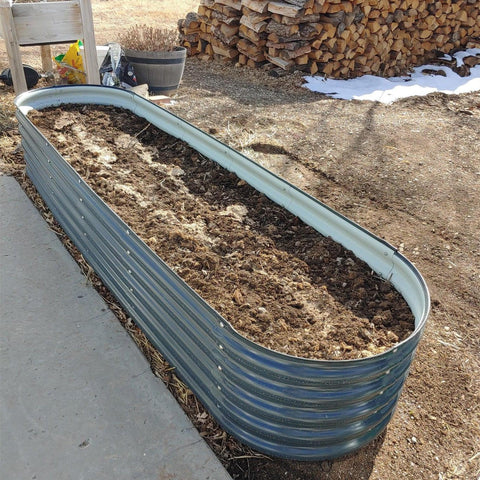Raising the Sweetest Summer Treat: Growing Watermelons in Raised Beds
As summer approaches, the thought of biting into a juicy, sweet watermelon is enough to make anyone's mouth water. Growing your own watermelons can be a highly rewarding experience, and using raised beds for watermelon cultivation can be a game-changer. In this blog, we'll explore why raised beds are the perfect solution for cultivating watermelons and how to get started on your journey to producing the most refreshing summer treat right in your backyard.
Why Choose Raised Beds for Watermelon Cultivation?
- Better Soil Control:
Watermelons thrive in well-draining, nutrient-rich soil. Raised beds allow you to control the soil composition, ensuring optimal conditions for watermelon growth. You can customize the soil mix to provide the ideal balance of nutrients and drainage, which is crucial for watermelon development.
- Improved Drainage:
Watermelons are sensitive to waterlogged soil, which can cause root rot and stunted growth. Raised beds provide excellent drainage, preventing excess water from pooling around the roots. This ensures your watermelons get the moisture they need without drowning.
- Warmer Soil Temperature:
Watermelons love warm soil. Raised beds, being above ground, heat up more quickly in the spring, giving your watermelon plants a head start in the growing season. This extra warmth can translate into earlier fruit production.

- Reduced Pest and Disease Pressure:
Elevating your watermelon plants in raised beds can help deter some common garden pests like ground-dwelling insects and rodents. Plus, the well-drained soil reduces the risk of fungal diseases, a common issue with watermelon plants.
- Easy Maintenance:
Weeding, pruning, and harvesting are all more accessible in raised beds due to their elevated nature. You'll spend less time bending over and more time enjoying your garden.
Getting Started with Watermelons in Raised Beds
- Bed Preparation:
- Choose a sunny location for your raised bed. Watermelons require full sun to thrive.
- Build or purchase raised bed frames, ensuring they are deep enough for watermelon roots to grow (at least 12 inches deep is recommended).
- Fill the raised bed with a well-draining, nutrient-rich soil mix. A combination of compost, topsoil, and organic matter works well.
- Planting Watermelons:
- Plant watermelon seeds or transplants according to the recommended spacing on the seed packet or plant tag. Typically, watermelons need ample space, so make sure not to overcrowd them.
- Water thoroughly after planting to help settle the soil and provide initial moisture.
- Watering and Fertilizing:
- Watermelons require consistent moisture but dislike soggy conditions. Water deeply and regularly, especially during dry spells.
- Fertilize your watermelons with a balanced, slow-release fertilizer, following package instructions. Supplement with a phosphorus-rich fertilizer when the plants start flowering.

- Support and Pruning:
- Consider using trellises or supports to keep the vines off the ground, which can help prevent rotting and pest damage.
- Prune excess foliage and side shoots to encourage the plant to put more energy into fruit production.
- Pest and Disease Management:
- Monitor your plants for signs of pests or disease and take appropriate action if needed. Using organic pest control methods is advisable if you prefer chemical-free gardening.
- Harvesting:
- Monitor your watermelons closely as they approach maturity. Ripe watermelons should have a dull skin and a hollow sound when tapped.
- Use a sharp knife or shears to cut the fruit from the vine, leaving a short stem attached.
Growing watermelons in raised beds is a delightful way to enjoy one of summer's greatest pleasures right from your own garden. With better soil control, drainage, and pest management, you're well on your way to savoring the sweet rewards of your labor. So get ready for a summer full of mouthwatering, homegrown watermelons that will keep you and your loved ones refreshed and satisfied all season long by rolling up your sleeves, preparing your raised beds, and planting them. Enjoy your garden!
